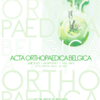Pediatric distal humeral supracondylar fracture – achievement of optimal pinning configuration
Supracondylar; configuration; pin spread ratio; pediatric; humerus; pin crossing angle
Published online: Aug 23 2022
Abstract
Pediatric supracondylar humeral fracture is com- monly managed using closed reduction and per- cutaneous Kirschner wires pinning. However, there is no consensus on optimal pinning configuration in the literature. Our study aims to review the pinning configuration in our department, correlate our results with the available literature, and suggest the optimal configuration using basic biomechanics principles. We performed a retrospective review on children that were treated with K-wire pinning for supracondylar fracture at our institution between August 2017 and August 2019. Intra-operative antero-posterior view fluoroscopic images were used to measure the pin separation ratio (PSR), pin crossing angle (PCA), medial inclination angle (MIA) and lateral inclination angle (LIA). Pearson Correlation was used to identify the relationship between the variables. Ninety-one patients were included for analysis (39 male: 52 female), with a mean age of 6. Average PCA in the crossed pin and lateral-entry only technique CA was 75° and 12°, respectively. Mean crossed pin and lateral-entry only technique PSR is 0.54 and 0.17, respectively. There was a significant difference in both mean PSR and PCA between the configurations (p <0.01). In subgroup analysis, optimal PSR > 0.33 and PCA >90° were best achieved in crossed pinning using 1 medial and 2 lateral pins. Assessing the biomechanical characteristics of the different fixation techniques, we have found that 2 lateral divergent pins and 1 medial pin using the crossed pin technique optimized both the PSR and PCA. We would recommend this configuration to optimize the stability of the fixation construct.
Level of Evidence: IV; Case Series
